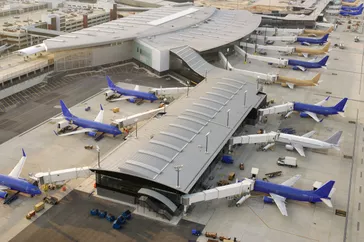Determine the Best Time to Visit Washington, D.C.
Choosing the right time to visit Washington, D.C., can enhance your experience significantly. Generally, the best seasons to visit are spring (April to June) and fall (September to November). During these months, the weather is pleasant, and you can witness the beautiful cherry blossoms in spring or the vibrant fall foliage.
Understanding Your Budget
Moreover, planning your budget is crucial. Here are some key expenses to consider:
- Accommodation: Prices vary widely depending on location and season.
- Dining: Expect to spend anywhere from $15 to $50 per meal, depending on the establishment.
- Attractions: Many monuments and museums are free, but some special events may require tickets.
Navigating the City
Consequently, understanding your transportation options in Washington, D.C., is vital for efficient travel. The Metro system is an effective way to get around the city, offering convenient access to major attractions.
- Metro: Explore the various lines that connect key areas of the city.
- Buses: Complement your travels with bus services that cover neighborhoods not serviced by the Metro.
- Walking: The flat terrain makes many attractions accessible on foot, giving you a closer look at the city.
Using the Washington, D.C. Metro Subway System
Understanding how to navigate the Washington, D.C. Metro Subway System can save you time. The Metro offers extensive coverage throughout the city and surrounding suburbs. Here are a few tips:
- Check the schedules for peak hours.
- Buy a SmarTrip card for convenience.
- Be aware of weekend service changes.
D.C. Liquor Laws
It’s also essential to familiarize yourself with D.C.’s liquor laws. The legal drinking age is 21, and it’s crucial to carry valid identification. Additionally, bar hours may vary, so checking local regulations beforehand can enhance your experience.
The Best Time to Visit Washington D.C.
If you’re planning a visit, consider the best times based on your interests. Spring is ideal for cherry blossoms, while fall provides stunning autumn colors. Moreover, visiting during weekdays generally means fewer crowds at popular sites.
Maps of Washington D.C.
Maps can greatly assist in navigating Washington, D.C. From attractions to transportation, having a reliable map on hand can make your visit hassle-free.
Chesapeake Bay Bridge Information
If you’re considering a trip outside the city, the Chesapeake Bay Bridge offers beautiful views and access to nearby attractions. Plan accordingly to avoid rush hours to ensure a smooth journey.
Transportation Options to and from Washington, D.C.
Understanding how to get to and from the city is essential. Whether by car, bus, or train, there are various options available. Consider your time constraints and budget while selecting the best mode of transportation for your needs.
Disabled Access in Washington, D.C.
Washington, D.C., is generally accessible for visitors with disabilities. Many attractions, including the Metro, offer services and accessibility features. Checking specific locations in advance can enhance your experience.
Commuting to Washington, D.C.
Commuting within Washington, D.C., involves various transportation options, including systems that connect the city with the surrounding regions. Understanding these options can help you plan your route effectively.
Military and Veterans Discounts in Washington D.C.
Furthermore, military personnel and veterans may find various discounts available throughout the city. It’s advisable to carry valid identification to avail of these offers.
History of the National Mall
The National Mall is not only beautiful but also rich in history. Visiting this iconic area allows you to learn more about the nation’s history and its most significant landmarks.
Dulles International Airport Guide
For travelers using Dulles International Airport, being informed about services and transportation options to the city can make your arrival seamless.
Ronald Reagan Washington National Airport Guide
Similarly, the Ronald Reagan Washington National Airport offers great accessibility to the city. Familiarizing yourself with airport operations can enhance your travel experience.
Union Station: A Central Hub in Washington, D.C.
Union Station serves as a vital transportation hub, connecting visitors to various destinations. The station also hosts shops and dining options, making it a convenient stop during your visit.
Conclusion
In summary, planning your trip to Washington D.C. involves understanding the best times to visit, budgeting accordingly, and navigating the city. With the right knowledge and preparation, you can enjoy all that this vibrant city has to offer.





